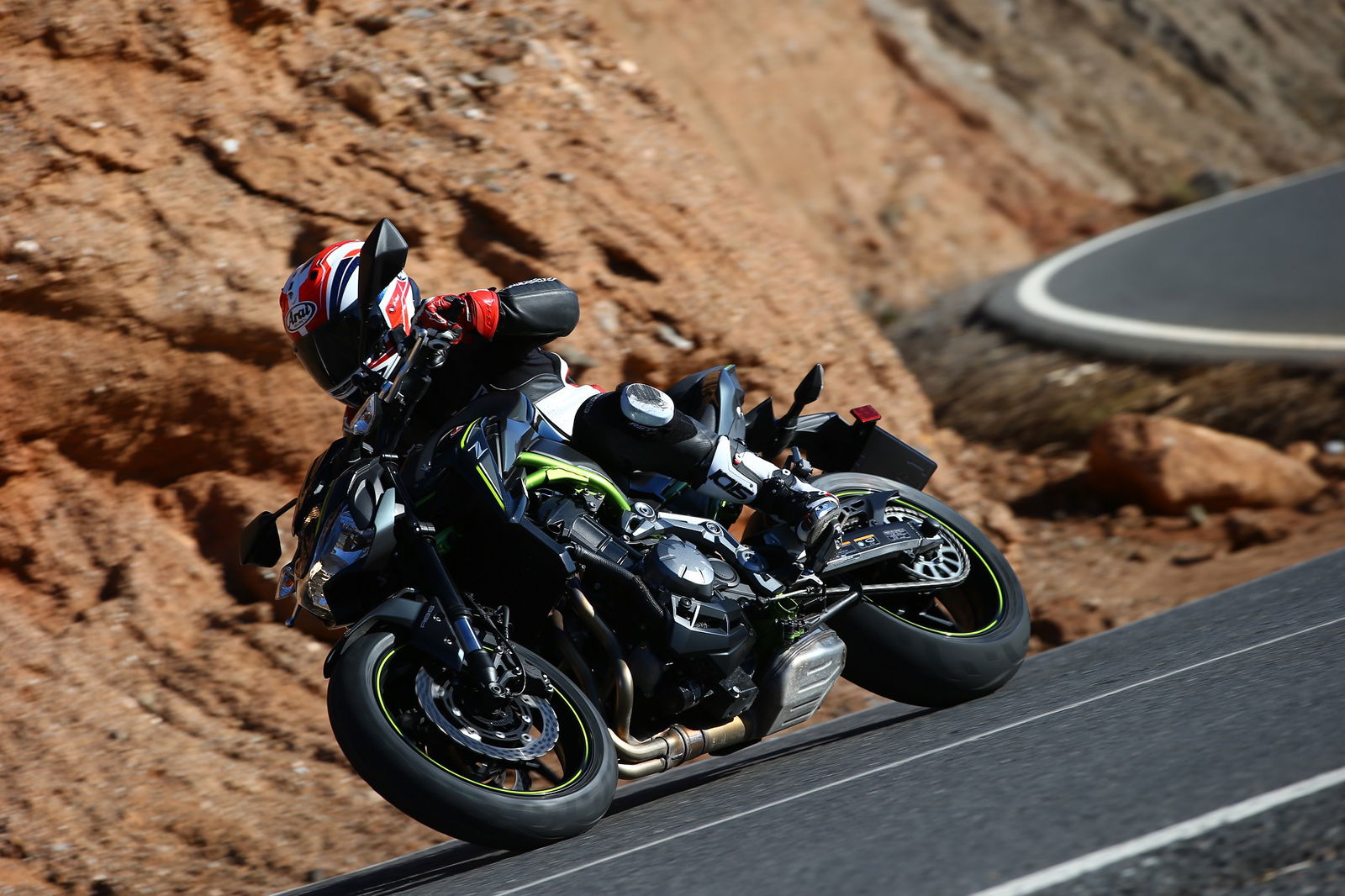First ride: Kawasaki Ninja 650 review
Beginner-friendly big bike is a replacement for the ER-6f, but does it really deserve to be called a Ninja?

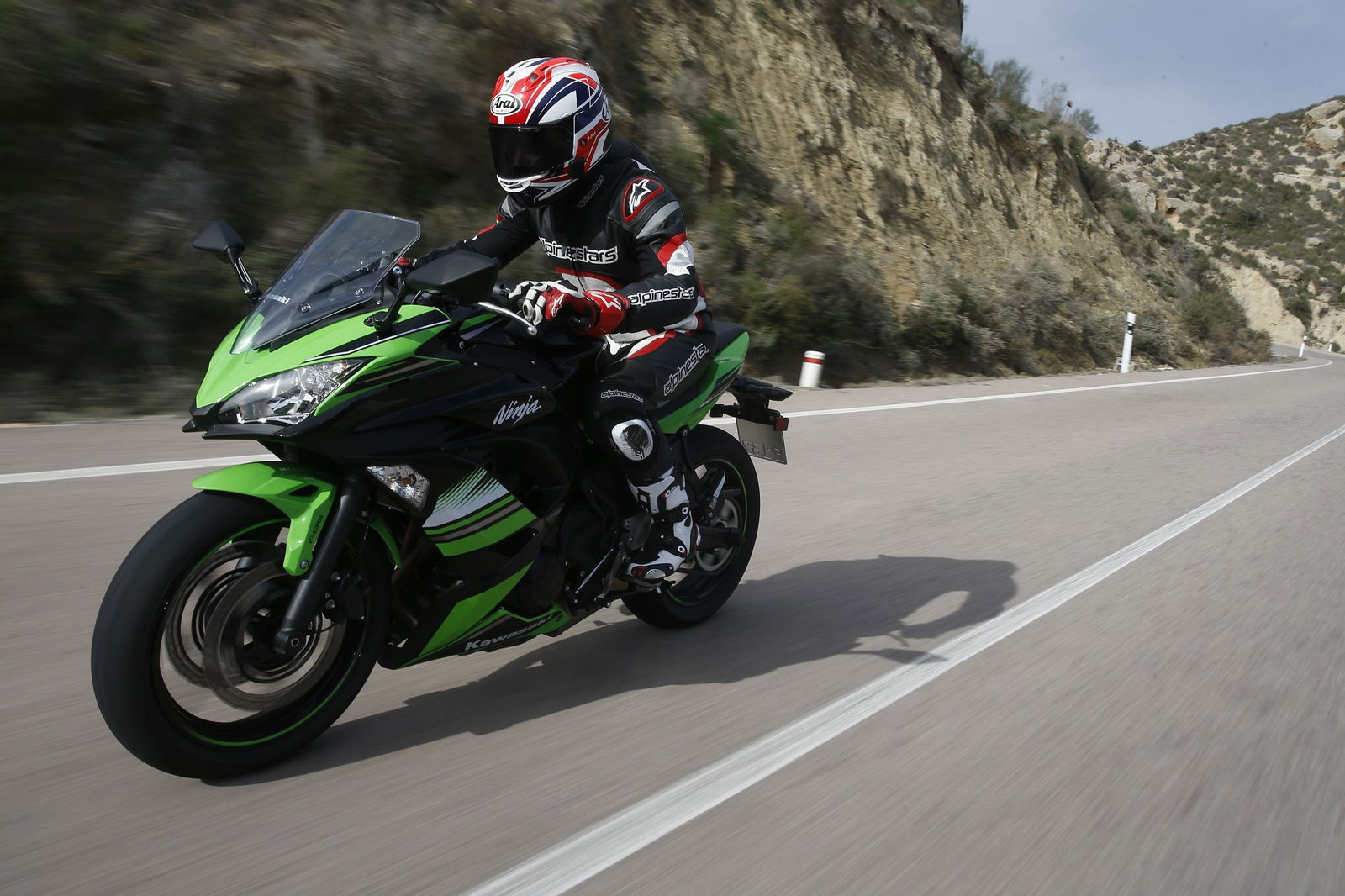
EURO 4 LEGISLATION – it giveth with one hand and taketh away with the other, yeth? I think you can argue that and thanks to this year’s thrilling new emissions-related developments, Kawasaki’s popular ER-6f’s days were numbered – meaning Kawasaki either had to cull it, update it or replace it.
Enter the new Ninja 650. It’s a powered by Kawasaki’s 649cc parallel-twin engine, which makes 69hp at 8,000rpm – that’s three less horses less than what the ER-6f delivers but it ain’t all bad because with 48.46lb/ft on offer, the Ninja 650 has slightly more torque than the ‘6f.

With a claimed kerb mass of 193kg, Kawasaki says the new Ninja 650 weighs 19kg less than the bike it replaces. Weight reduction comes from a new lighter steel trellis frame (saving a claimed 10kg), a new swingarm, plus lighter five-spoke wheels. It’s all sounding very Ninja-ry so far.
Kawasaki says it’s the Ninja 650 is less thirsty thanks to a 6.8% improvement in economy and the Ninja 650 also boasts a slip assist and slipper clutch, adjustable shift light, new Nissin brakes, an X-shaped LED rear light assembly and a centrally-mounted rear shock.
Styling-wise, it’s been made to look like a bike worthy of carrying the Ninja name, much like the new Z1000SX we rode at the end of last year. The SX looks like the offspring of the ZX-10R, and the Ninja 650 follows suit with its sharp front end, sports bike styling and KRT graphics (on the bike I rode).
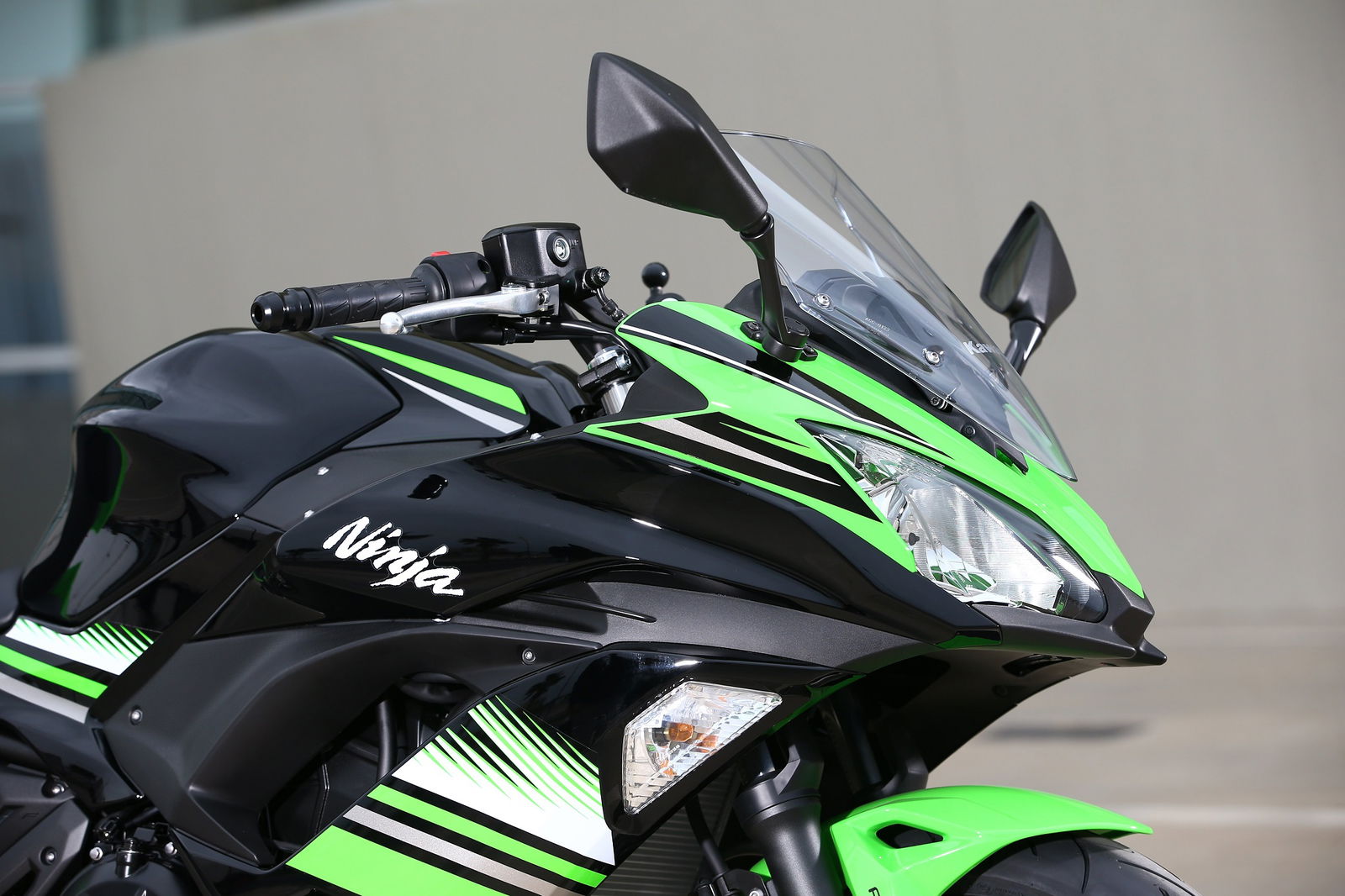
At £6,349, it costs £300 more than the ER-6f (and another £200 if you want the KRT graphics pictured above). That means it’s cheaper than the about-to-be-replaced Honda CBR650F (Honda hasn’t announced prices the for the new model yet) but pricier than both the Yamaha MT-07 (£6,099) and Suzuki SV650 (£5,699).
Aside from the reduction in power, when you look at the Ninja 650 in isolation, I don’t think that’s too sad an outcome and on paper at least, it looks like Kawasaki has taken the Euro 4 lemons, cut them up and come back to the party with the tequila.
The motor might have lost a bit of outright power but I didn’t feel short changed because what it lacks in horsepower, it makes up for with useable and accessible midrange grunt. Besides, they say it’s not how much you’ve got, it’s how you use it, at least that’s what I’ve always been told…
The smooth spread of torque makes itself known from just under 5,00rpm and the engine gives it's best from there until the (adjustable) shift light starts its urgent orange blinking at 8,000rpm. It’s a smooth-running engine too and free from vibrations and rattles. Blasting down the Spanish motorway was a pretty smooth experience, and yes, it protests if you leave it in a high gear but that’s the only time I found it getting on for agricultural.
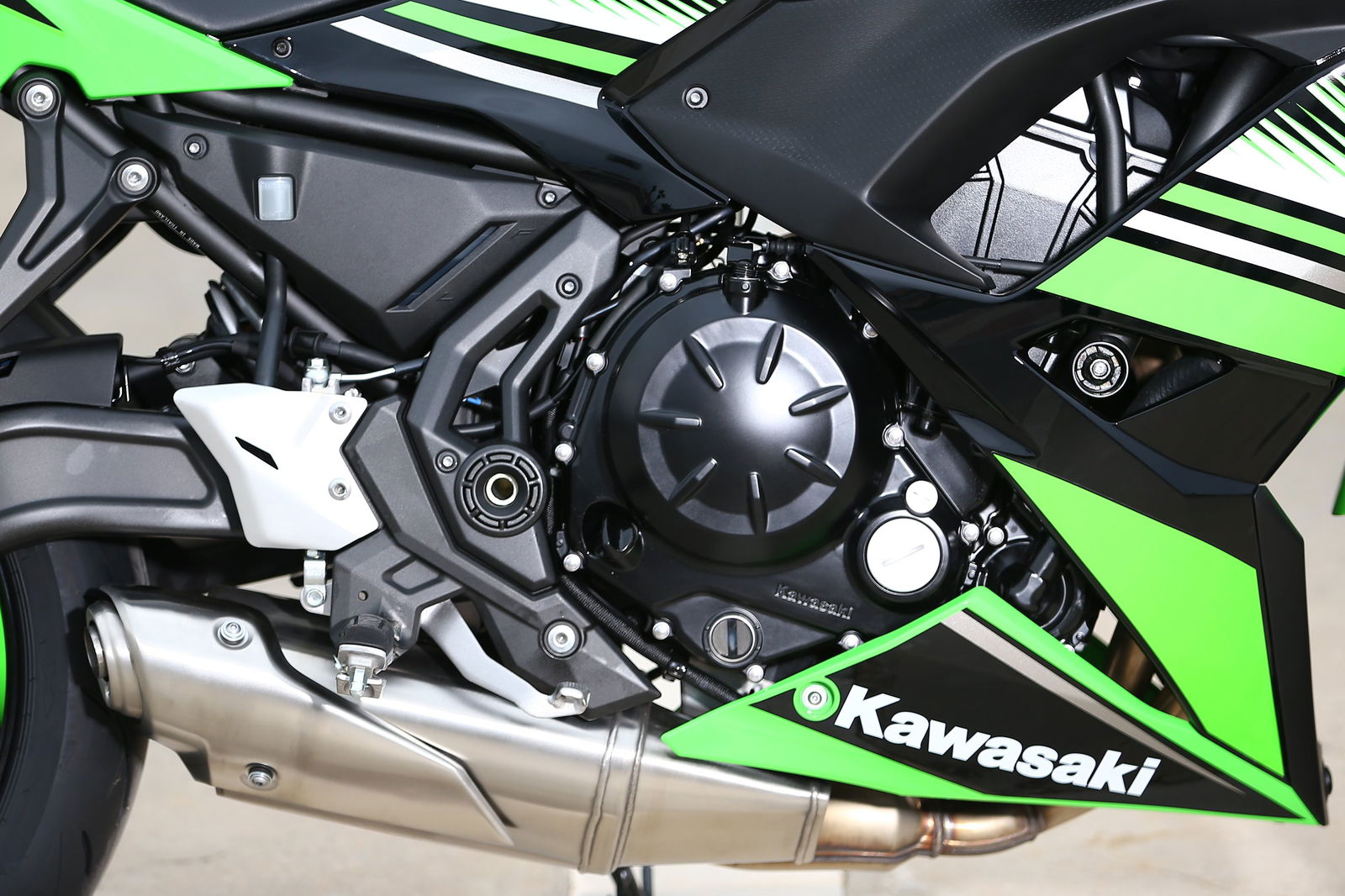
It’s not an engine that’s going to set your trousers or their contents on fire, but for a bike aimed at first-big-bikers, downsizers, ER-6 customers and learners, it’s spot-on. It’s friendly and has enough poke to see you becoming a serious contender in the city centre traffic light GP, plus there’s enough there to bring a smile to you face when you want to fire through your favourite set of weekend bends. It’s no way near as entertaining as the motor in the MT-07 though and the SV650's V-twin also has a bit more charm about it. Clean fuelling and predictable throttle response round things off, and it’s fair to say that Kawasaki has done a decent job of rescuing this engine from the Euro4 doldrums.
It's the same story with the brakes. At the front there’s a pair of two-piston Nissin calipers biting on to 300mm semi-floating discs. It’s a setup that provides exactly the right amount of power for this bike, even when I started asking more and more of them on the way in to countless tight bends. Feel through the adjustable lever is good too. The rear wheel is anchored by a single piston caliper and 220mm disc.
The good brakes and accessible, unintimidating mid-range grunt did one thing for me: encouraged me to get a move on down some southern Spanish roads because well, it would be rude not too, wouldn’t it? After all, this is a new member of the Ninja family…

Something less encouraging is the budget suspension. The front and rear bouncy bits are adequate for slow stuff but when you start asking more of the bike, like maybe at the weekend or on the long way home from work, the suspension gets revealed as the cheap kit it is.
And here what it is: the front end of the Ninja 650 gets a 41mm right way up, non-adjustable fork and in the rear sits a centrally mounted preload adjustable shock with a horizontal back link linkage – unlike the side mounted unit on the ER-6f, which bolted directly to the swingarm.
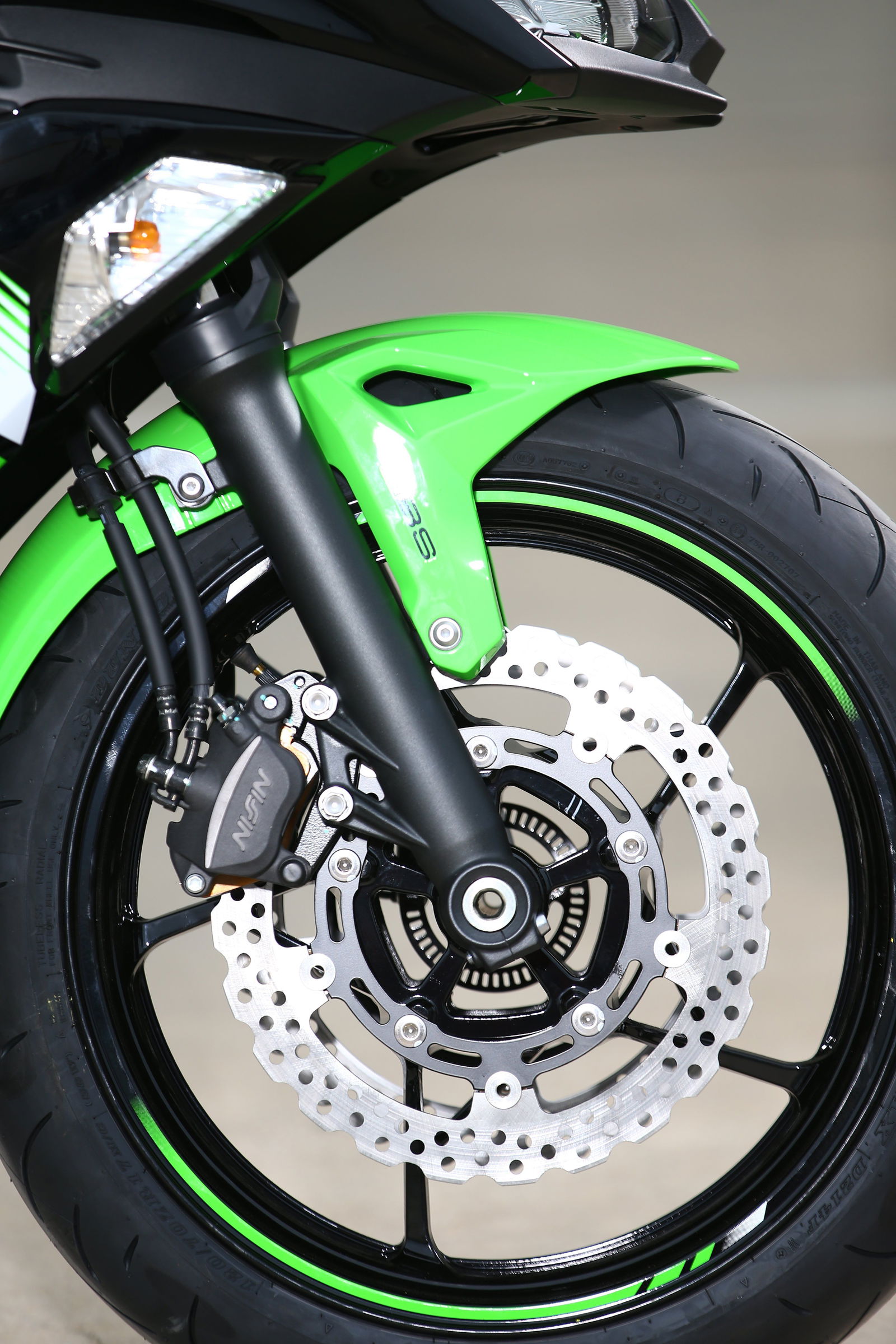
As I said, it’s OK for town/city riding and motorway work but for the fun stuff that this bike’s ‘Ninja’ moniker should live up to, the suspension lacks refinement. At the front, the fork moves without much provocation and lacks a nice controlled feeling. It meant that when riding with a stomach full of espresso and head full of affected Spanish passion, there were times when the fork struggled with what I wanted the front of the bike to do, even though the chassis is willing.
The shock is the worst offender and was prone to delivering harsh punishment over dips and bumps. A click more preload didn’t make a huge amount of difference and adjusting the shock requires removing a panel to get to the access point for the C-spanner.
Aside from the soft suspension and sometimes uncultured suspension performance, the Ninja 650 goes round corners well, although the rear Dunlop Sportmax D214 W-spec tyre did give me a couple of unpleasant moments when it momentarily gave up as I flicked around slow, nadgery corners and it was because I was troubling it with my whiskey throttle.
THE WEIGHT the Ninja 650 has shed over the ER-6f makes it feel light and effortless to steer, and I quickly trusted the front end. I’m sure that anyone who swings a leg over it will soon find themselves bossing it because it's agreeable and easy to get on a ride.
Apart from a couple of moments when I was wished for more rear-end grip, the Ninja 650 is really easy to get on with at low speed and also feels stable enough – although better suspension would help it feel even more stablerererer. It’s worth noting that the MT-07 also suffers from pogo suspension, which hampers fast riding and if you want a similar bike that handles well, the SV is the one to go for.
But a life of hard-riding isn’t what the Ninja 650 is all about. No, it’s meant to be a light, nimble middleweight (it is) that delivers a daily dose of fun among (yep) alongside comfort. To that end it’s similarly practical, comfortable and versatile, with enough space under the seat to stash a wallet, phone and ten Benson.

The low 790mm-high seat (15mm lower than the ER6f’s and good if you’re short like me) is comfortable and the riding position, although upright, aint uptight – it still enabled me to get into attack mode once one corner flowed into another – elbows out a bit, head down, and I was there. I suspect that if you’re nearer 6 foot, you’ll find a lack of leg room and will dwarf the bike. Once you get to the fun stuff, the sculpted tank is easy to lock in to with the inside of a knee as you live out your Jonathan Rea / Tom Sykes World Superbike riding fantasy. Bike riding fantasy, I mean…

It’s a diminutive bike though – smaller than it should be and I haven’t decided whether that’s good for attracting new riders (it can be restricted for A2 licensees) or a bit of an odd choice when considering its capacity – a ZX-6R isn’t that small, and the SV650 and MT-07 also have a big bike feel that this falls short of. Having aid that, according to Kawasaki, this is now a good entry level bike in much the same way a circa quarter-litre bike was 20 or 30 years ago, so perhaps there’s some logic behind its size.
The clutch and brake levers are adjustable, which is useful. The Ninja 650 also has a light action clutch and slipper clutch and the clutch is indeed very light. The slipper clutch put up with all deliberate and accidental down-change provocation and makes the Ninja 650 a friendly, pleasant bike to ride.
The screen is adjustable through three levels, but only if you’ve got the toolkit handy, which is rubbish. At its lowest setting it doesn’t do much but at its highest, it kept the windblast off my body, though I definitely wouldn’t be choosing this bike for a long tour. Although effective when at the highest setting, why Kawasaki has failed to use the Z1000SX’s simple screen adjustment mechanism (or similar) on this bike is a mystery to me.
Sticking at the front, the mirrors are as big and wide as yo’ momma’s ass, so visibility of what’s going on behind was never a problem for me.
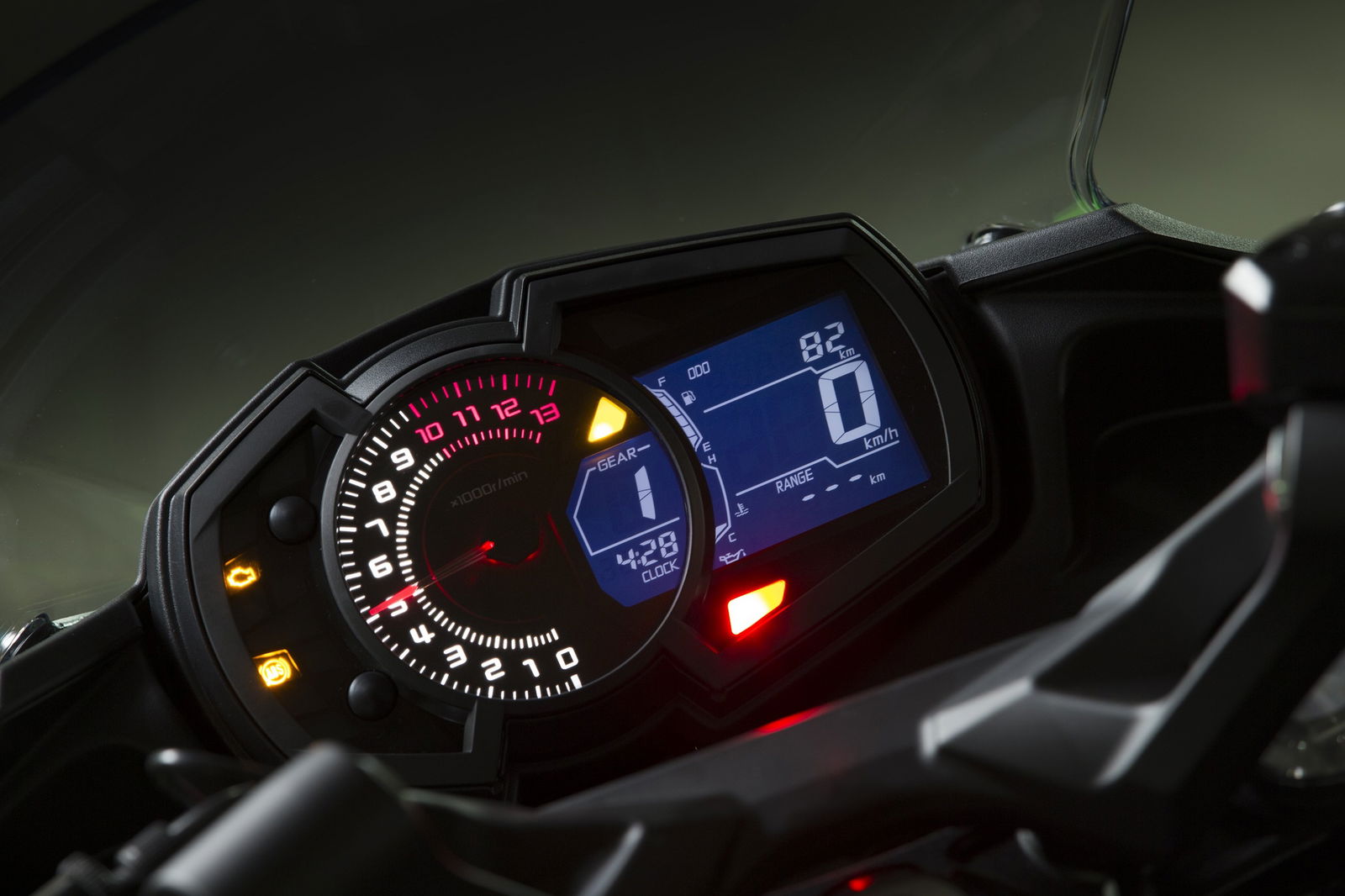
The instrumentation is clear too and I’m partial to an analogue rev counter, so enjoyed watching it spin up but the LCD speedo, shift light, gear position indicator, time and trip meter are all crisp and clear. Kawasaki also says that the needle of the rev counter is meant to change to red when the revs rise but I didn’t notice it doing that at all.
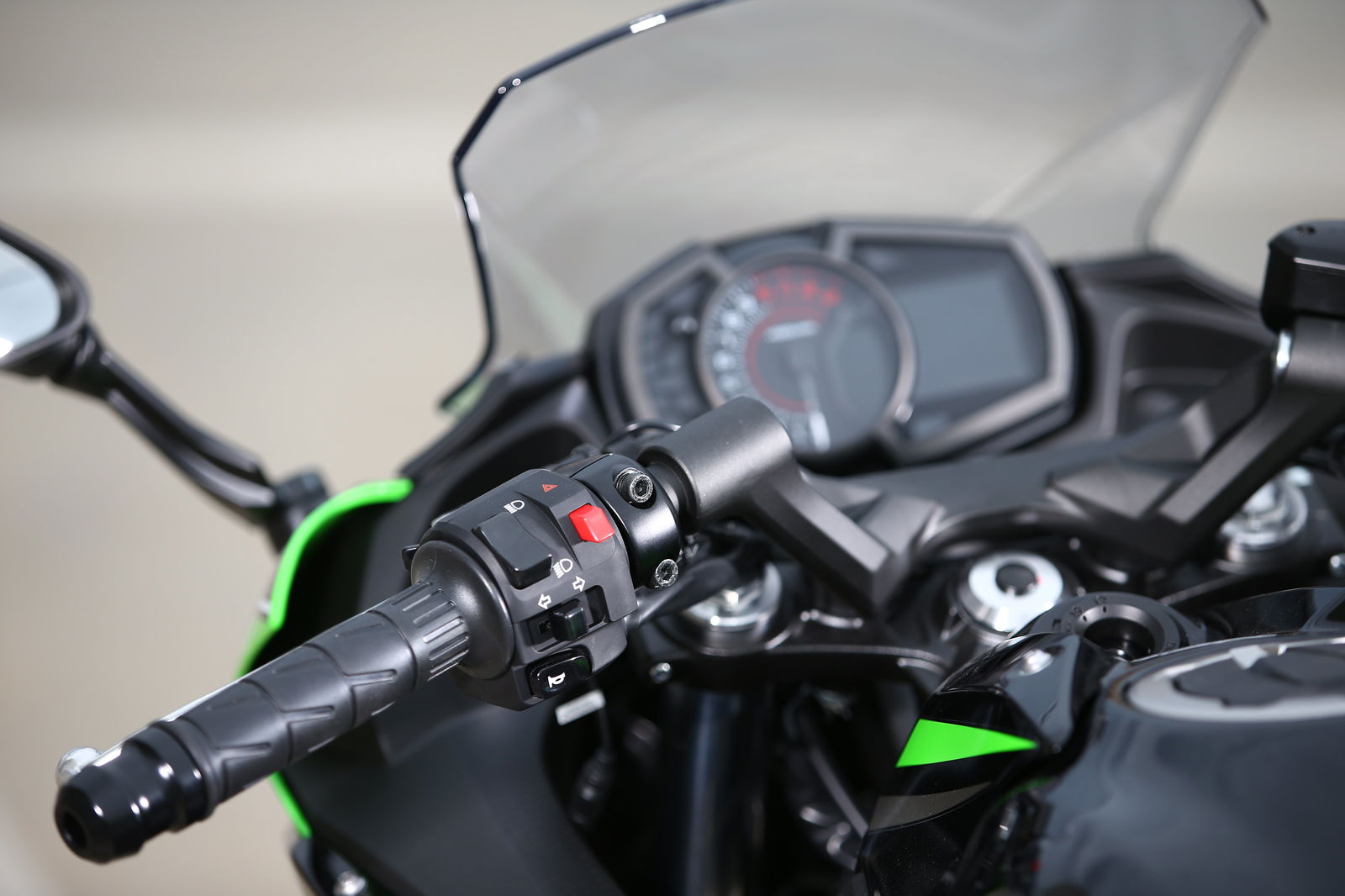
There’s a refreshing lack of buttons on the switchgear too – this bike has no traction control, riding modes or electronic business beyond the Bosch ABS module and that also means the screen isn’t packed full of lights and symbols clamouring for attention so the cockpit is basic and functional, and there’s nothing wrong with that.
The Ninja’s rear end is similarly well considered, with an LCD rear light assembly that looks good, although the rear of the bike is crying out to be rid of the mass of plastic number plate hanger with a tail tidy.
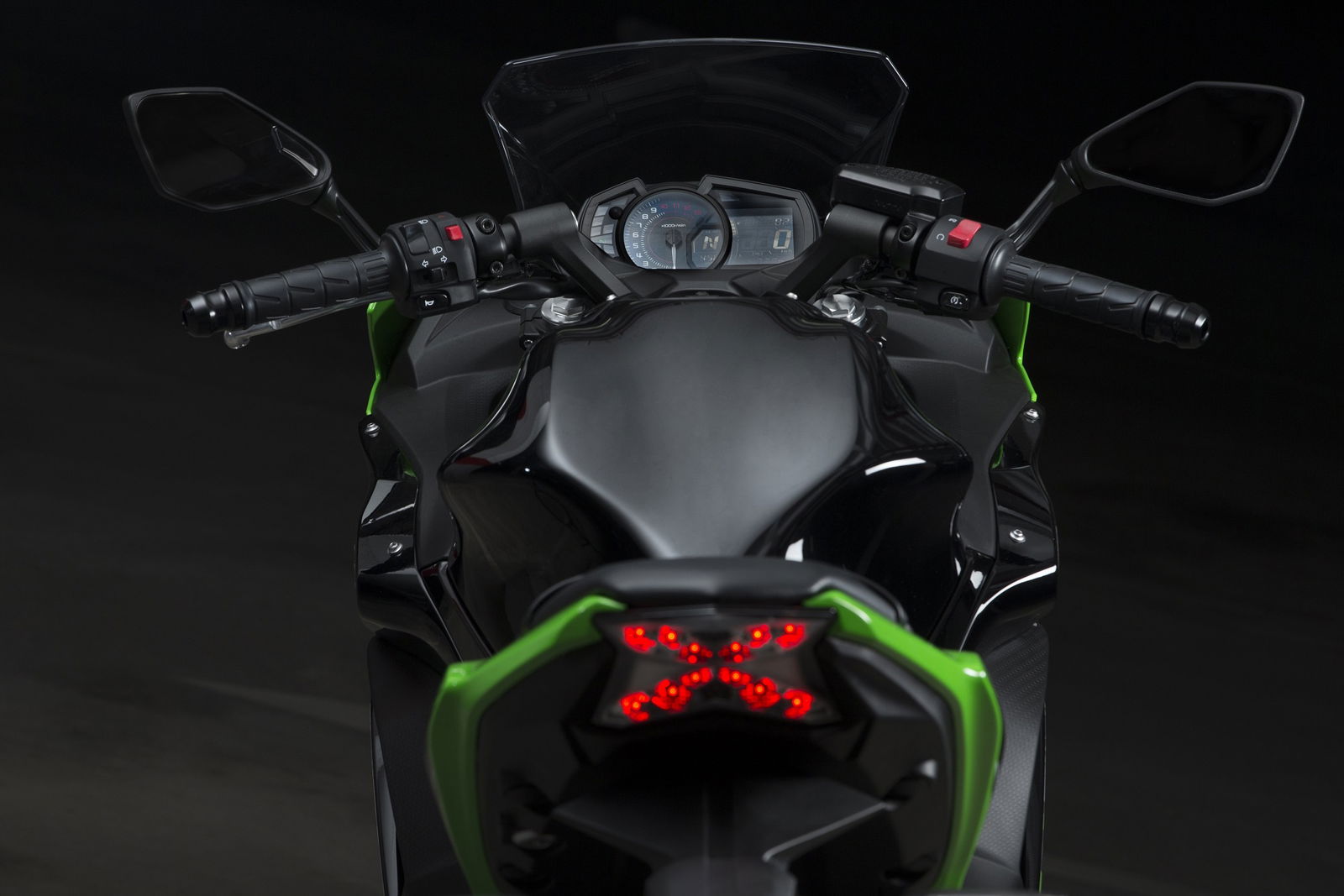
The quality isn’t up for question – the Ninja 650 it looks and feels well put together with nice plastics and paint finishes that stood up well to my prodding, pulling and poking.
Overall, the new Ninja 650 feels like a winning replacement for the ER-6f because it brings a lot to the table. It’s superbly friendly and accessible to simply get on, ride and enjoy – so from me it gets a big fat tick in the box marked ‘Be a good replacement for the ER-6f’.
But it’s not deserving of the Ninja name. I owned a 2005 ZX-6R until fairly recently, so maybe I’m biased but the Ninja family should be about the pinnacle of performance. I’m not even talking about being bat shit fast; a Ninja shouldn’t have cheap, harsh suspension, high bars and average tyres. It should be exciting, visceral and a bit scary at times. The Ninja 650 dilutes the family, but then again, if that’s my main concern, then I probably haven’t got too much to complain about.
Model tested: Kawasaki Ninja 650
Price: From £6,349
Engine: 649cc liquid-cooled DOHC 8-valve parallel twin
Power: 69hp at 8,000rpm
Torque: 48.46lb/ft at 6,500rpm
Suspension: Front – 41mm diameter non-adjustable fork / Rear – Preload adjustable monoshock with horizontal back link
Brakes: Front – Two Nissin two-piston sliding calipers and 300mm semi-floating petal discs / Rear – Single-piston caliper and 220mm petal disc
Weight: 193kg kerb mass
Tank capacity: 15 litres
Colours: ‘Metallic Spark Black’, ‘Lime Green / Ebony (KRT Edition)’ and ‘Candy Burnt Orange’
Availability: Now

